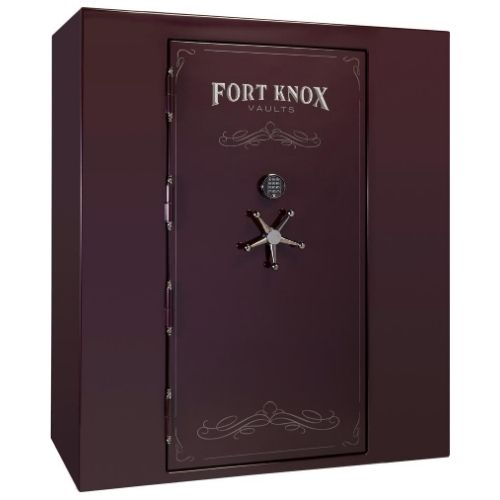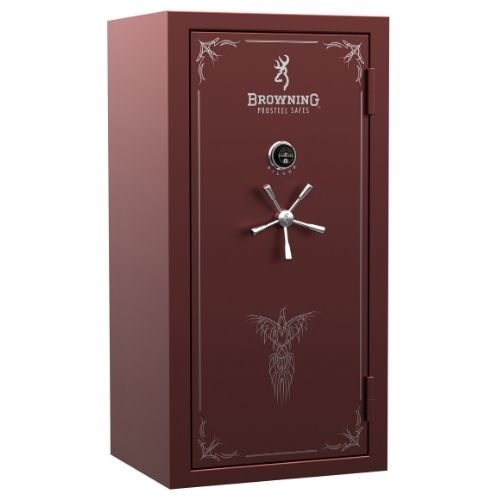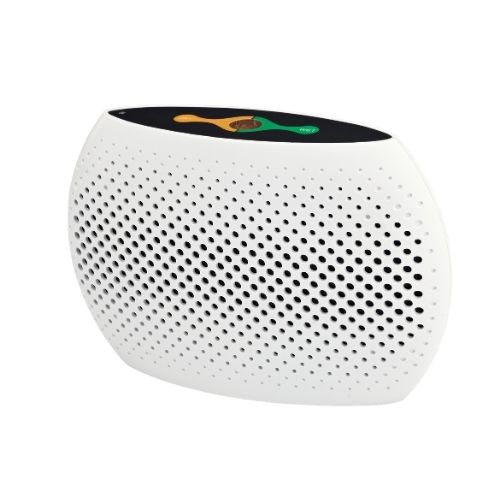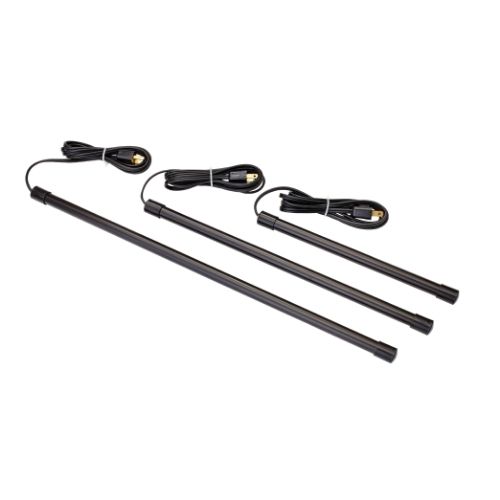We may get commissions for purchases made through links in this post. Thanks for the support! 👍
Gun safes are a huge part of firearm ownership, as everyone that has a firearm should have a gun safe to compliment it. They help with security from both thieves, but also family members, but also will handle double duty in the way of keeping valuables away from fire if that were to ever happen.
In this article, we are going to talk through 11 different questions people have about gun safes that just aren’t really answered elsewhere.
- What kind of paint is used on gun safes?
- Can you buy touch up paint for a gun safe?
- Should I buy an older gun safe?
- Do safes hold their value?
- Can you scrap old safes?
- Where should a dehumidifier be placed in a gun safe?
- Why does my safe have moisture?
- Who delivers gun safes?
- Are gun safes with keys any good?
- Are gun safes bullet proof?
- How do I put a dehumidifier rod into my gun safe?
- Conclusion
What kind of paint is used on gun safes?

There are quite a few different types of paint used on gun safes, however on higher gun safes the most common paint style is automotive paint.
This means it will act just like your car, and can easily be washed, buffed, and polished if it ever starts to become dull. Fort Knox Vaults is a great example of safes that utilize this method.
Another style of common paint is hammered paint, which is a wavy style of finish, and even some manufacturers will use a grainy style of paint. One of the most popular safes that uses this is the Sporter Series by Browning (you can buy it here).
While you may not be able to buff and polish these paints, they do hide scratches and damage better than automotive paints.
Can you buy touch up paint for a gun safe?
So you finally found a scratch or gash in your gun safe and want to get it fixed? Touch up paint is a great option for many different types of safes that use automative style of paint. You can easily access a bottle by calling the manufacturer of the safe, and asking if they have any available.
If they don’t offer this, then you will want to gather the paint code and information, supply that to your local auto parts store, and they should be able to get you a touch up paint bottle to get your rolling on fixing that problem.
Please note: This only works on automative, shiny paint. If you have a hammered finish, or a grainy style paint, touch up paint won’t work nearly as well, as it won’t help fill in the gash, and you won’t be able to match the color perfectly. In those cases, your best bet is to get the best, and closest color of your safe, and do your best. It won’t ever quite look the same, but it’s better than bare metal.
Should I buy an older gun safe?
Older gun safes, at least ones that were made within the past 20 years are completely up for grabs! As we will learn about in the next question here, safes haven’t changed much in the fire rating, and security department, meaning an older used safe can be a great value.
The only downside to these older safes is their styling, with more modern safes being, well, more modern looking. However everything else should hold up.
That said, there are many new companies that have revolutionized how gun safes are made. Older safes tend to follow the traditional route, however there are other companies like SecureIt Gun Storage that offer a very different take on the gun safe market. You won’t be able to find older version of these safes, as they haven’t been on the market crazy long. These safes by that company, might be a great option for you.
Do safes hold their value?

Modern safes (much like a new car) will initially lose a decent amount of their value right after purchase, however after that they don’t lose much value from there on out.
This is due to the fact that gun safes honestly haven’t changed a ton over the years, meaning a used gun safe from 10 years ago, essentially has the same standards as today.
That said, if there is a jump in quality on a specific part of the safe in the industry, it does really cause the safe to lose almost all of its value.
A good example of this is fire rating used to not have testing, and any form of regulations, and then when fire ratings came under scrutiny, manufacturers quickly made adjustments to make this rating considerably better.
This is why I wouldn’t buy a safe any older than probably the 90s.
Can you scrap old safes?
Gun safes can actually be scrapped just like a vehicle can! Call your local wrecking yard, or metal scrap yard and they can get you a bid on your old, or damaged safe if you no longer want to use it.
They might even come pick it up for your, which can save you a ton of time and energy.
Keep in mind though, its not going to be a ton of cash, but it might be worth the hassle.
Where should a dehumidifier be placed in a gun safe?

We always recommend placing the dehumidifier in the bottom right hand side of the gun safe.
Of course you can also put it on the left, but in the end the rear bottom is going to be the best place.
Generally, there will be a hole for the dehumidifier cord in the rear on one side, and will determine where it is placed.
That said, don’t put it anywhere but on the base of the safe, if you put it higher up it will not be nearly as effective. Warm air goes upwards, not downwards.
Which means any part of the safe that is under the dehumidifier, will not benefit from the warmth that the dehumidifier gives off, and can mean that area could become damp.
Why does my safe have moisture?
So you are finding moisture in your safe, or even mold? That is because gun safes don’t have any form of airflow, and every time you open the door, new air comes into the safe that has moisture in it. Without that airflow, that moisture settles onto the interior fabrics, firearms, or valuables that you have.
The easiest, and best way to fix this is by adding a dehumidifier. There are a couple different types of these units, the most popular being the rod style, of which gets warm, making the inside of the safe warm enough so that the moisture in the doesn’t settle.
- Top 5 Gun Safes that look like a nightstand
- Top 4 Gun Safes that Look like Clocks
- Top 10 Best Quality Handgun (Pistol) Safes
Who delivers gun safes?
Delivery of a gun safe is probably the most difficult part of gun safe ownership. These safes are crazy heavy, and one of the most awkward items to move, which means you likely aren’t going to want to do it yourself.
There are a couple different places that should be able to deliver your gun safe for you!
The first being the retailer you purchased it from. Most brick and mortar gun safe retailers will offer their own service for moving safes, and are probably going to be the best bet if you are able to do this. These retailers only move gun safes, and nothing else, meaning they know all of the tricks you need to get it done right with the least amount of damage to you, your home, and your new safe.
The next option, if you didn’t buy a safe from a retailer is going to be a moving company. Most moving companies have the capability of moving safes with the equipment that they have for other heavy items like refrigerators, pianos, and likely other safes they have moved in the past. While these guys aren’t quite as specialized, they generally can get the job done, and do it well. Just make sure to discuss how truly heavy your safe is, before they come by, to make sure they have the right amount of people and tools to get it done right.
The final option, is to have
Are gun safes with keys any good?
Generally speaking, gun safes that have keys tend to be on the budget end of the spectrum. Keys exist for gun safes, primarily because there needs to be a redundancy for an electronic locking mechanism that has a tendency to fail. You will notice, that as you look at more expensive safes, they begin to no longer have key locks, even though they still have electronic locks.
That said, you will find many mechanical lock gun safes on the market that have keys on them, however these key locks only lock the dial so that it can’t spin, not to access the safe itself.
Are gun safes bullet proof?
The normal gun safe out there is not going to be bulletproof, sure if you get thicker, and thicker steel it will become less penetrable.
However there are brands out there like Fort Knox Vaults where you can get something called an ArmaKnox 3/16″ AR500 Liner. Essentially, it adds a layer on the inside of the safe that is the same metal used in bulletproof vests.
So, in the end, gun safes inherently are not bulletproof, but you sure can make them be if you really want to.
How do I put a dehumidifier rod into my gun safe?

Adding a dehumidifier is incredibly easy to do. The most common way to add a dehumidifier into your safe is with a rod dehumidifier (like this one).
You will detach the cord from the unit, place the thin detached portion of the cord through the dehumidifier hold in the back, and then replug it into the dehumidifier.
From here, you will place the rod along the wall of the safe on the floor.
Then, on the outside of the safe, you will plug that cord into the wall or power strip.
It’s that easy!
Alternatively, there are plenty of cordless dehumidifiers out there as well, like silica gel packets, cordless dehumidifiers, and more.
Conclusion
I hope this rapid fire answering of questions helped you learn a little bit more about that gun safe you are looking to either buy, or that safe you already have.
Remember, if you have a firearm, you should have a gun safe. To help you out on that journey, you should also make sure to read through this article here, where I detail my favorite safes overall.

